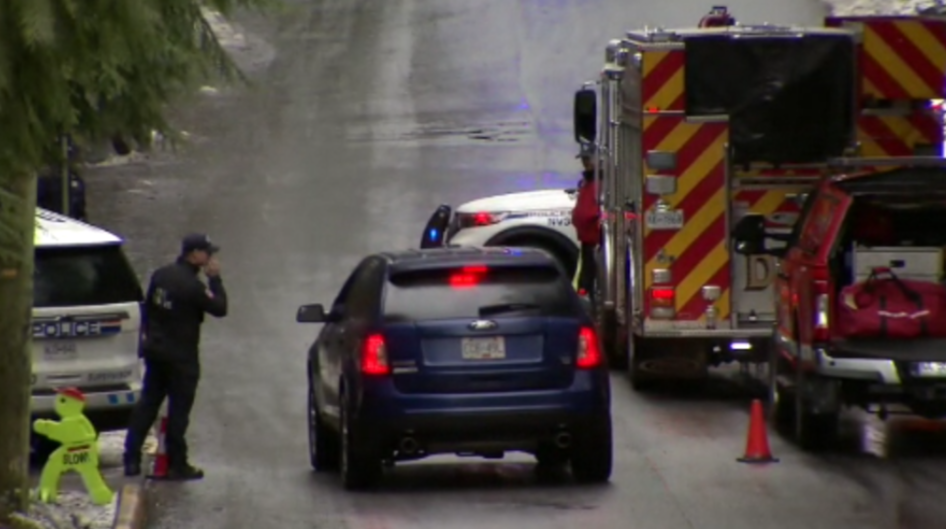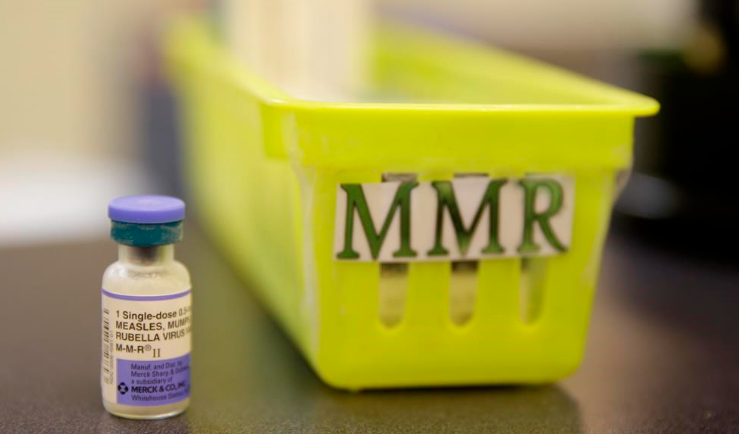Women fear using B.C.’s harm reduction services increasing their risk of overdose: UBC study

Posted April 10, 2022 5:33 pm.
Last Updated April 10, 2022 8:44 pm.
Some mothers in Vancouver who use drugs feel they don’t have safe harm reductions spaces to avoid violence or implications to their child access and custody.
That’s according to a new study published in the American Journal of Public Health by researchers with UBC’s faculty of medicine and the BC Centre on Substance Use (BCCSU), which interviewed mothers between 2017 and 2019 who accessed women-only Supervised Consumption Sites (SCSs).
In B.C., the increasingly toxic and unpredictable illicit drug supply has been the primary cause of death with 6,007 fatalities between 2017 and 2021, according to a BC Coroners Service report.
Since the public health emergency was declared in 2016, the province and advocates have focused on addiction treatment, rehabilitation, safe supply and decriminalizing the possession of small amounts of drugs. Despite these options, Natasha Touesnard, the Executive Director of the Canadian Association of People who Use Drugs, says that women who have so far been ignored need policymakers to consider protecting them when developing options.
As it is now, she argues the drug policy is gendered.
“The very fact that we ignore different individuals in our society, racialized individuals, the LGBTQ2+ population and women and parents experience… to me is negligent of our society,” Touesnard explains. “Predominantly those individuals that face harm from drug policy are impoverished as well.”
“So it’s this double-take on top of being marginalized. Then impoverishment that we face also makes us more susceptible to drug harms.”
Related Articles:
-
B.C. pushes to decriminalize possession of small amounts of drugs
-
B.C. advocates say feds proposed lower threshold for drug decriminalization is harmful
-
B.C. expanding access to safer drug supply
The lead author of the study is also an assistant professor in UBC’s department of medicine, and a research scientist with the BCCSU. Dr. Jade Boyd says the study details the social inequities that have a compounding effect on women who use drugs. She explains they found as harm reduction and substance use services scaled up, some women and gender diverse people included in the study said they feared for their safety and losing child custody or child reunification which increased some parents’ overdose risk.
“The welfare system in terms of surveillance, disproportionately affects mothers marginalized by criminalization, poverty and racism in particular,” she explains. “So mothers are experiencing a range of forms of surveillance, it could be just being reported after seeking help to child protection services, it can be having to do forced drug testing, or any kind of forced drug treatments in order to maintain visitation access to their children, and can go far as incarceration, or forced sterilization, and the involvement of child protection services.”
Fear of child separation and violence increases #overdose risk for mothers, according to a new study led by Dr. Jade Boyd (@UBCDoM, @BCCSU). https://t.co/gNiT2yscAx
— UBC Medicine (@UBCmedicine) March 30, 2022
Considering these barriers, she says, this is why parents are unable to ask for support without facing consequences.
Speaking from her own experience, as a woman who uses drugs and was separated from her children, Touesnard emphasizes “a person who uses drugs to stay well in this world, doesn’t mean you’re a bad parent.”
“For… any child protective services to be able to intervene, without understanding the circumstances, without understanding the background of what’s going on or your tolerance without being a doctor, is beyond comprehension to me that we would put families, not only mothers, but children through this trauma,” she told CityNews.
“Opioids and other drugs, they satiate the need for pain. They take away the pain — whether it’s physical, or emotional, or psychological. And for those very reasons for us to deny that, and then condemn people for taking substances that actually make them well, is one issue.”
From the UBC study participants, a number of them admitted to using drugs alone to hide their drug use after being separated from a child or in response to the stress associated with custody-related drug-use surveillance.
“A high proportion of overdose deaths in British Columbia occurred while people were using alone, so we know that that is a heightened risk for overdose death if you’re using substances alone. Now because mothers who use drugs risk scrutiny, risk or fear child separation, it compels them to use alone even before being separated from their children,” Boyd added.
Some participants had someone look after their children while they used drugs Boyd says.
Amid the toxic drug supply in the province, parents are put at a high overdose risk Boyd added. This is especially so for people who increased how much they would use in order to deal with that grief, she added.
Lack of women-only, gender diverse sites
In the UBC study mothers who were accessing two women-only low-barrier supervised consumption sites in Vancouver said the services didn’t act as a deterrent to accessing supervised consumption services and other treatment for opioid addiction.
In Canada, one overdose prevention site for women exists. The SisterSpace opened in Vancouver’s Downtown Eastside in 2017 and allows women to use their own illicit drugs under the supervision of trained workers who carry naloxone. They can also access a clinic and peer workers, and get referrals for treatment and housing.
“We fought, long and hard for a women-only space … in part because we were hearing from women … [who feel] often unsafe, they’d be waiting with men who they owed money to, or drug dealers, debt collectors, men who had assaulted them. So it wasn’t that the physical space itself wasn’t safe, or that the staff weren’t safe, but they were being forced to use use the use of space with men who were unsafe,” Janice Abbott, CEO of Atira Women’s Resource Society.
Related Article:
-
Overlooked, under-analysed: Overdose reversals saving hundreds in B.C.’s opioid crisis
-
Violence from men, as women-only supervised injection site gets busier
-
Women-only supervised consumption site opens in Downtown Eastside
Abbott says for the first few years of the space, she had to lobby to keep it open and funded in part because more men are dying than women from the toxic drug supply. For that reason she says she was told the centre would need to direct limited resources to men.
“If you look strictly at numbers, there are more men who are dying from failed drug policy, then there are women, but at the end of the day women are dying. And in particular, First Nations, Metis and Inuit women in this in this land,” she said.
While the study did not focus on Indigenous, Black or low-income women, Boyd tells CityNews these marginalized groups are over scrutinized by child protection services. She adds Indigenous women in the province have much higher overdose rates than non-Indigenous women.
View this post on Instagram
Over time Abbott says it became less difficult to keep the SisterSpace open.
SisterSpace has about 140 to 278 visits a day since it opened nearly five years ago, and in total, has had 436,000 visits, 139 overdoses, 233 doses of naloxone administered, 33 transfers to hospital, and no deaths.
SisterSquare, which is the tent site, data from January 2021 shows about 247 visits everyday, 26 overdoses, 56 doses of naloxone administered and five transfers to hospital and no deaths.
Women included in the UBC study accessed SisterSpace and another informal SCS.
Time to re-examine drug policies, services advocate says
Touesnard says drug policies need to be reviewed because women fear using the current harm reduction services.
“[Policy makers] say that drug policy is not gendered. I would argue the fact that it is. And for those reasons, I think we need to reexamine drug policy moving forward,” she argues.
“We have safe consumption sites that women can’t openly go to with their children or parents, and have a safe place for their children if they use because people think predominantly people who use drugs are inebriated. But we don’t understand that when people use drugs that maybe to satiate their wellness.”
Speaking for herself, Touesnard admits she is less likely to visit a safe consumption site because of the risk of being separated from her children.
“There’s no place for us to go in the society. And it’s so detrimental. And that’s why people stay at home and die. They’d rather use at home in silence without telling anybody than having their children apprehended,” she says.
To support women and parents, Touesnard is calling for safe consumption sites across Canada that provide a safe space for them and their children.
“The fact that women or people have to use and then be separated from the movement for having somewhere safe for themselves without having the children apprehended is beyond comprehension,” she said, “At most times, and almost every time, people are going there to make themselves well. For the fact that our sight society does not recognize that is beyond my whole being.”
View this post on Instagram
Apart from drug policy changes, Touesnard shifts also need to be made in Canada’s child welfare system.
“Welfare is well below the poverty line. And we should not be as a society accepting that level of being impoverished,” she said. “Second to that, we have to really start looking at sustaining employment for individuals, if that’s what they choose. But because there’s no recommendations or programs for individuals to move beyond that, they stay stagnant in where they are.”
Touesnard says if she never landed a job years ago, “I probably would have never been able to move forward in my life.”
“It took somebody given me a break, to come into harm reduction, and change my life. Change my children’s lives, change the circumstances that I was in because once my life actually had an equitable employment opportunity that I was valued for who I was. And so the more we look at things in derogatory ways, the less people are to engage.”
Lastly, Touesnard urges Canadians to reexamine how they contribute to the stigma people who use drugs face.
Based on the study’s findings, Boyd says it proves there is a need for non-punitive policies which include access to safe, nontoxic drug supplies. She adds, gender-specific and culturally informed harm-reduction responses, community-based, mother-focused strategies as alternatives to parent–child separation, including apprehension-free integrated services that are culturally informed, gender-inclusive and child-friendly, is also needed.








